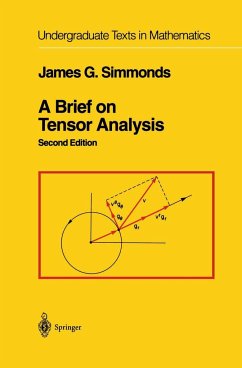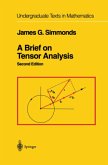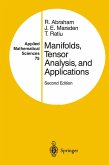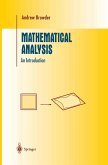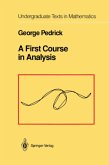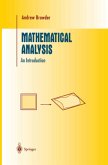This new edition is intended for third and fourth year undergraduates in Engineering, Physics, Mathematics, and the Applied Sciences, and can serve as a springboard for further work in Continuum Mechanics or General Relativity. Starting from a basic knowledge of calculus and matrix algebra, together with fundamental ideas from mechanics and geometry, the text gradually develops the tools for formulating and manipulating the field equations of Continuum Mechanics. The mathematics of tensor analysis is introduced in well-separated stages: the concept of a tensor as an operator; the representation of a tensor in terms of its Cartesian components; the components of a tensor relative to a general basis, tensor notation, and finally, tensor calculus. The physical interpretation and application of vectors and tensors are stressed throughout. Though concise, the text is written in an informal, non-intimidating style enhanced by worked-out problems and a meaningful variety of exercises. The new edition includes more exercises, especially at the end of chapter IV. Furthermore, the author has appended a section on Differential Geometry, the essential mathematical tool in the study of the 2-dimensional structural shells and 4-dimensional general relativity.
There are three changes in the second edition. First, with the help of readers and colleagues-thanks to all-I have corrected typographical errors and made minor changes in substance and style. Second, I have added a fewmore Exercises,especially at the end ofChapter4.Third, I have appended a section on Differential Geometry, the essential mathematical tool in the study of two-dimensional structural shells and four-dimensional general relativity. JAMES G. SIMMONDS vii Preface to the First Edition When I was an undergraduate, working as a co-op student at North Ameri can Aviation, I tried to learn something about tensors. In the Aeronautical Engineering Department at MIT, I had just finished an introductory course in classical mechanics that so impressed me that to this day I cannot watch a plane in flight-especially in a turn-without imaging it bristling with vec tors. Near the end of the course the professor showed that, if an airplane is treated as a rigid body, there arises a mysterious collection of rather simple looking integrals called the components of the moment of inertia tensor.
There are three changes in the second edition. First, with the help of readers and colleagues-thanks to all-I have corrected typographical errors and made minor changes in substance and style. Second, I have added a fewmore Exercises,especially at the end ofChapter4.Third, I have appended a section on Differential Geometry, the essential mathematical tool in the study of two-dimensional structural shells and four-dimensional general relativity. JAMES G. SIMMONDS vii Preface to the First Edition When I was an undergraduate, working as a co-op student at North Ameri can Aviation, I tried to learn something about tensors. In the Aeronautical Engineering Department at MIT, I had just finished an introductory course in classical mechanics that so impressed me that to this day I cannot watch a plane in flight-especially in a turn-without imaging it bristling with vec tors. Near the end of the course the professor showed that, if an airplane is treated as a rigid body, there arises a mysterious collection of rather simple looking integrals called the components of the moment of inertia tensor.

